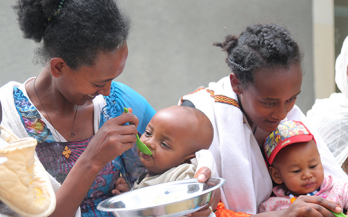Adolescence is a critical period characterized by physical, social and developmental changes that impact on health and eating behavior. Qualitative research was conducted in Java, Indonesia to examine individual, social, environmental and macrosystem factors affecting snacking behaviors in unmarried adolescent girls 16‐19 years of age.
In this paper, we used national prevalence estimates among girls and young women 10–22 y of age from the 2014 State of Food Security and Nutrition in Bangladesh report as an example to demonstrate that determining the true prevalence of undernutrition, overweight, and obesity is complicated by racial/ethnic variation across populations in timing of the adolescent growth spurt, growth potential, and body build.
This report addresses a critical issue of our time – how can we exploit new ideas and new technology to nourish and feed a growing world, and do it sustainably? Working on food systems reform, it is easy to underestimate the speed of change around us. But the reality is that even in the remotest corners of the globe, the drivers of food systems change are making their presence felt with storm-like force.
The objective of this study was to determine the association between breastfeeding practices, diet and physical activity and maternal postpartum weight. This was a secondary data analysis of a randomized community trial on beneficiaries of the Programa de Desarrollo Humano Oportunidades, recently renamed Prospera, without any diseases that could affect body weight.
The garment industry has contributed significantly to the economic growth of Bangladesh over the past decades accounting for 82% of the country’s USD 31.2 billion export industry. The garment sector employs directly approximately 4.4 million people, and indirectly 20 million people.
Poor quality infant and young child (IYC) diets contribute to chronic under‐nutrition. To design effective IYC nutrition interventions, an understanding of the extent to which realistic food‐based strategies can improve dietary adequacy is required. The objective of this study was to assess the nutrient adequacy of children's diets in two rural agro‐ecological zones of Kenya.
Schoolchildren in Nigeria are rarely targeted by micronutrient interventions. This study determined the effects of a multi-micronutrient beverage on biochemical and anthropometric indicators of nutritional status among schoolchildren participating in a pilot school feeding program in Nasarawa State, Nigeria.
As stunting moves to the forefront of the global agenda, there is substantial evidence that behaviour change interventions (BCI) can improve infant feeding practices and growth. The objective of this study was to examine the design and implementation of complementary feeding behaviour change interventions, from the peer‐reviewed literature, to identify generalisable key determinants.
Vitamin and mineral deficiencies, particularly those of iron, vitamin A and zinc, affect more than two billion people worldwide. The purpose of this study was to assess the effects and safety of home (point-of-use) fortification of foods with multiple micronutrient powders on nutritional, health, and developmental outcomes in children under two years of age.
The objective of this project is to provide state-of-the-art information and service with regard to selection, use, and interpretation of biomarkers of nutrient exposure, status, function, and effect. Specifically, this project seeks to develop consensus on accurate assessment methodologies that are applicable to researchers, clinicians, programmers, and policy makers.










